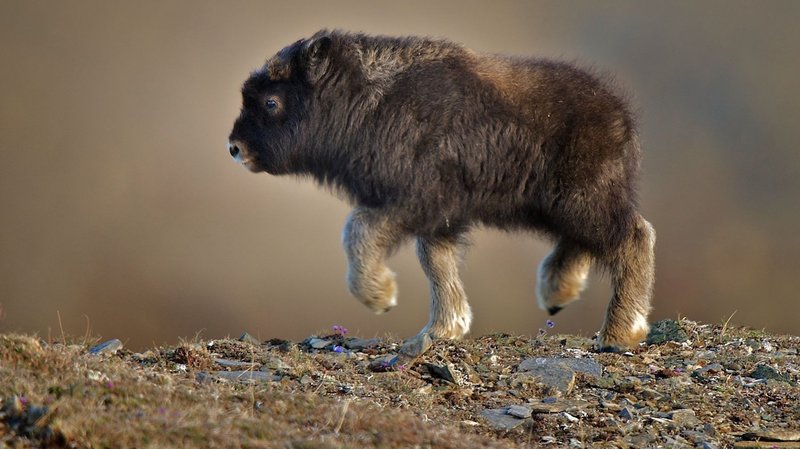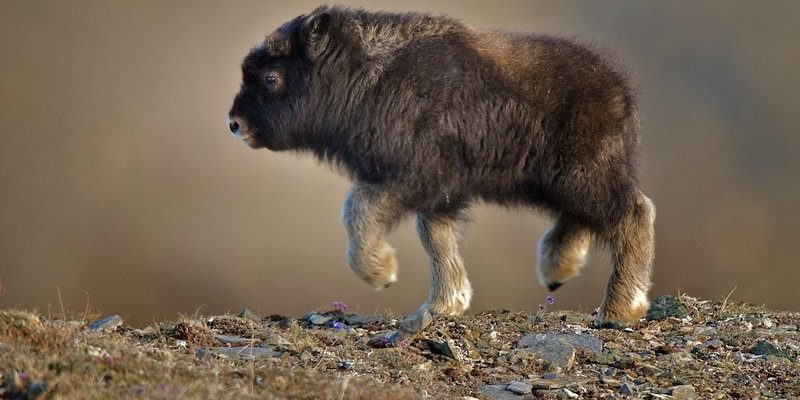
Let’s dive into the world of muskoxen and explore their current conservation status. Understanding their plight is crucial, not just for their survival, but for the health of their ecosystems. After all, every creature plays a role in maintaining balance, just like pieces of a puzzle.
What Exactly is a Muskox?
Muskoxen are large, shaggy mammals that thrive in Arctic and sub-Arctic regions, primarily in Greenland, Canada, and Alaska. Their thick coats consist of long guard hairs and a dense underlayer of wool called *qiviut*, which helps them endure freezing temperatures. Imagine wearing a warm, cozy blanket while facing bone-chilling winds—that’s a muskox’s everyday life.
These fascinating animals typically weigh between 400 to 900 pounds and can grow up to 6 feet long. Their impressive horns can curve up to 3 feet and are used for defense against predators. A herd of muskoxen often sticks together, creating a protective circle around their young. It’s a beautiful display of teamwork, much like a family gathering where everyone looks out for each other.
Current Population Status
So, how many muskoxen are left in the wild? Fortunately, they’re not currently classified as endangered, but their populations fluctuate widely. Different regions have different conservation statuses. In some areas, like Alaska, muskox populations are increasing, while in others, they face threats that could endanger their survival.
Population estimates suggest that there are approximately 80,000 muskoxen globally. While that number might sound encouraging, it’s essential to remember that localized populations can be incredibly vulnerable to environmental changes.
The Importance of Diversity
Diversity within muskox populations is vital. For instance, herds in different locations may have distinct genetic traits, which allow them to adapt to their particular environments. When we talk about conservation, it’s crucial to maintain a healthy variety of these animals across their habitats. A lack of genetic diversity can lead to vulnerabilities like disease susceptibility, making them less resilient to changes.
Major Threats Facing Muskoxen
Even though muskoxen aren’t classified as endangered, they still face several significant threats. Here’s a closer look at some of these dangers:
- Climate Change: As the Arctic regions warm, the habitat of the muskox is changing, impacting their food sources and migration patterns.
- Human Encroachment: Increased development, such as mining and oil drilling, disrupts their natural habitats.
- Predation: As wolves and other predators grow in number, muskoxen can become targets.
- Hunting: Although regulated, hunting can affect local populations, particularly if not managed correctly.
Climate change is perhaps the most alarming threat. It’s not just about rising temperatures; it affects the delicate balance of ecosystems. A warmer climate can lead to changes in vegetation, which directly impacts the muskox’s food supply.
How Conservation Efforts are Supporting Muskoxen
Many organizations are working tirelessly to protect muskoxen and their habitats. These efforts range from habitat restoration to public education. Let me explain a few examples of how conservation strategies make a difference.
First, many wildlife reserves and parks have been established to provide safe havens for muskoxen. These protected areas ensure that their habitats remain intact and undisturbed.
Additionally, educational programs raise awareness about the importance of muskoxen to their ecosystems. When communities understand the value of these animals, they’re more likely to support conservation efforts. Think of it like a team rallying together for a common goal.
Research and Monitoring
Ongoing research plays a crucial role in conservation. Scientists often study muskox behavior, reproduction, and health to better understand how to protect them. Monitoring populations helps track changes over time, providing vital insights for future conservation strategies.
For instance, satellite tracking has become a valuable tool, allowing researchers to follow the movements of muskox herds and understand their migratory patterns. This data is crucial for creating informed management plans.
What Can You Do to Help?
Wondering how you can pitch in? There are several ways individuals can support muskox conservation:
- Educate Yourself: The more you know about muskoxen, the better equipped you are to advocate for their protection.
- Support Conservation Groups: Donating to organizations that focus on wildlife conservation can make a big difference.
- Spread Awareness: Share what you learn about muskoxen with friends and family. Everyone can play a role in conservation.
Even small actions, like reducing your carbon footprint or supporting sustainable products, can help combat climate change, directly benefiting muskoxen and their habitats.
Looking Forward: The Future of Muskoxen
While muskoxen currently hold a stable place in the animal kingdom, their future isn’t guaranteed. The key lies in ongoing conservation efforts and public involvement. As we continue to face global challenges, it’s vital to remember that our choices impact not only muskoxen but all wildlife.
With awareness and action, we can ensure these remarkable creatures continue to roam the Arctic tundra for generations to come. Remember, the fight for conservation is a marathon, not a sprint. Every step counts, and together, we can make a real difference.
In conclusion, the status of muskoxen may not be dire, but vigilance is essential. By supporting conservation efforts and educating ourselves and others, we can help protect these unique animals and their habitats. After all, preserving our planet’s biodiversity is a shared responsibility, and each of us has a part to play.

